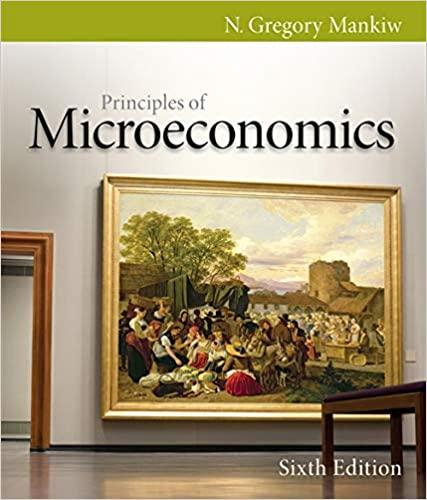The residents of the town Ectenia all love economics, and the mayor proposes building an economics museum.
Question:
The residents of the town Ectenia all love economics, and the mayor proposes building an economics museum. The museum has a fixed cost of $2,400,000 and no variable costs. There are 100,000 town residents, and each has the same demand for museum visits: QD = 10 – P, where P is the price of admission.
a. Graph the museum’s average-total-cost curve and its marginal-cost curve. What kind of market would describe the museum?
b. The mayor proposes financing the museum with a lump-sum tax of $24 and then opening the museum free to the public. How many times would each person visit? Calculate the benefit each person would get from the museum, measured as consumer surplus minus the new tax.
c. The mayor’s anti-tax opponent says the museum should finance itself by charging an admission fee. What is the lowest price the museum can charge without incurring losses?
(Hint: Find the number of visits and museum profits for prices of $2, $3, $4, and $5.)
d. For the break-even price you found in part (c), calculate each resident’s consumer surplus.
Compared with the mayor’s plan, who is better off with this admission fee, and who is worse off? Explain.
e. What real-world considerations absent in the above problem might argue in favor of an admission fee?
Step by Step Answer:







